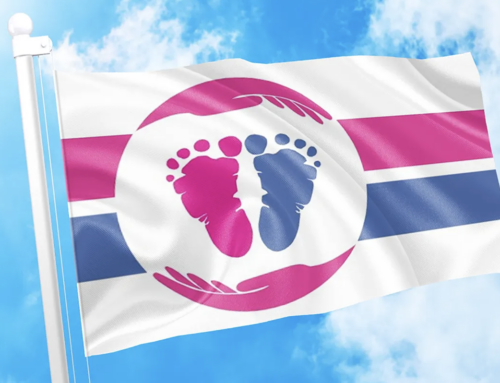Teen-Aid is sexuality education that has been far too long in arriving. It is realistic, sensible, imaginative and optimistic about the ability of males and females to co-exist with mutual admiration and respect, and the answer for those who oppose contraceptive-oriented programmes for teens. In November of 1982, a Teen Pregnancy Conference was held at the University of Calgary. A few of us in attendance were horrified by the suggested remedy proposed – increased contraceptive information, with condom dispensers “in the elementary school washrooms, if necessary.” As Birthright volunteers, we sadly recalled the sweet-faced adolescents and the often distraught boyfriends and parents who had unknowingly relied on contraceptives to prevent pregnancy. And what about the other problems? Contraceptives don’t prevent girls “as young as 13” from requiring treatment at the Tom Baker Cancer Centre’s Colcoscopy Clinic for cancerous cervical cell changes due to too-early sexual activity. While deciding how best to counteract dubious remedies for treating the effects of un-chastity, we happened to read about Teen-Aid (which began in Spokane, Washington), and in the fall of 1983, decided to join forces and become an affiliate.
Certain beliefs guided the development of Teen-Aid Calgary’s education programme. Man’s knowledge of himself and his world has mushroomed. Adolescents need and deserve to know more of this recent knowledge, particularly in the area of sexuality. Many programmes underestimate the capacity of teens to make healthy decisions and concentrate on imparting knowledge pertaining to advances in contraceptive technology. Teen-Aid focuses on information that enables teens to better understand themselves and their emerging sexuality. This increases the likelihood of their making responsible and healthy decisions.
Teens are neither children nor adults. Most psychological theories recognize the limited capacity of teenagers. Limitations include the inability to imagine oneself in a difficult situation leading to the “it won’t happen to me” rationalization so prevalent among teens, the hedonistic (pleasure seeking) tendencies of teenagers, the difficulty in making decisions in new situations where there has previously been no experience, and the fact that teens are great imitators of adult behaviour. Recognizing these limitations of the adolescent, it becomes obvious why teenagers have difficulty accepting responsibility for their actions. Teen-Aid assists the teenager on his or her way to maturity by suggesting the less complicated path of abstinence, previously traveled by Teen-Aid teachers and found to be quite safe and for the most part satisfying.
Teen-Aid looks at sexuality from the broadest perspective – that is, what it means to be male and female. Certainly our bodies are different, but increasing evidence indicates mental and emotional sex differences. Our whole programme is based on recognizing and understanding these differences while acknowledging (the) similarities the sexes share as human persons. Much evidence shows that the sex hormones, testosterone for males and estrogen-progesterone for females influence much more of the body than just the reproductive organs. Behavioural scientists are finding that the sexes learn, think and act differently, although no one talks of inferiority. The idea, which Teen-Aid espouses, is to celebrate our differences and to capitalize on our ‘sexual’ strengths. Compensating for our differences in the form of a battle between the sexes, each insisting on sameness (translated as ‘equality’) would seem to make little sense and even to promote misunderstanding and confusion.
In Teen-Aids view, for the typical child, formal sex education should begin in grade 7, or about the age 12. Information about expected pubertal body changes is appropriate at the grade 5 or 6 level. We believe the theory of a latency period (when children are not particularly interested in things sexual) is valid and should be respected. Some children will be exposed to (discover) sexually-explicit materials and wish to discuss sexual matters earlier, but it is best to deal with these children on an individual basis. The same applies to children who have become sexualized due to sexual abuse.
Beginning at the grade 7 level, Teen-Aid has designed informative presentations appropriate to the maturity and interests of the majority of students in a classroom. Often parents and teachers are aware of the students needs and able to recommend including or deleting certain topics. Students also are helpful in requesting pertinent topics for discussion. We begin with information about our male and female bodies. Respect for our-selves and others as sexual persons begins with this understanding. A look at brain functioning differences leads to an understanding of our psycho-sexual natures – the very different way each sex views the act of intercourse and related activity including sexual maturation recognized medically to differ by 15 to 20 years.
After understanding ourselves as sexual beings, we begin to examine the process of relating to one another. Friendship provides the human component. To be fully human, sexuality must be viewed in this context or it becomes selfish. Teen-Aid looks at qualities of true friendship, the importance of friendship to an individual’s well-being and logical reasons for treating all people with respect.
Since 9 out of 10 people marry, Teen-Aid has looked in depth at the importance of friendship in marriage. Without exception, spouses in successful marriages believe the fact that their partner is their best friend is the most important aspect of marriage. Clearly, there is a close connection between how one views and treats others of both sexes before marriage and how one views and treats that special person, one’s spouse, after, marriage.
There is a natural tendency in humans after puberty to be attracted to and to view the opposite sex as an object for one’s sexual gratification. This attraction is beneficial because it keeps the human race going, but also causes people to use others in a sexual way. The ability to weigh one’s desires against possible hurt to or by a friend can, more often then not, keep sexual urges under control.
Teen-Aid addresses other topics including dating, love versus infatuation, preparation for parenthood and responsibilities to self, family, offspring, friends and society when expressing oneself in a sexual way, believing each to be important for discussion with teens.
Initially presentations were made to boys and girls together. However, it soon became apparent that differing maturity levels in the younger grades and varying interests in the older grades necessitated separation of the sexes for most presentations. In our experience, separate classes also increases participation by students and makes possible the advantages of reduced class size for discussion. Certainly adolescents feel more comfortable asking questions of an intimate nature, possibly because they sense that too much togetherness destroys a little of the mystery that occurs naturally between the sexes.
One of the great concerns to those of us in Teen-Aid has been remedying our reluctance to discuss sexuality to adolescents without parents either present or at least knowledgeable about our information to their children. People everywhere agree that the responsibility for educating children in sexual matters belongs primarily in the home. Sadly, far too many parents abdicate this responsibility for various reasons. A primary aim of Teen-Aid is to encourage communication between parents and adolescents in the area of sexuality. To this end, we are co-planning a series of theme weeks in Calgary Separate Schools beginning this fall. A participating school will join together students, staff, parent and student councils, parents, and churches in a week of ‘Focusing on Sexuality and Communication.’ Various presentations and activities will assist in the development of healthy sexual attitudes. This has exciting possibilities for the future and the encouragement of chastity as a positive behavioural choice.
Those of us working in Calgary with Teen-Aid are very excited about our organization. It exists because a few people believe strongly that young people must receive the message that human sexuality makes possible the greatest joy or the deepest sadness, depending on how we use it. In our experience, an abiding faith in the importance of this message makes Teen-Aid possible in spite of any obstacles.



